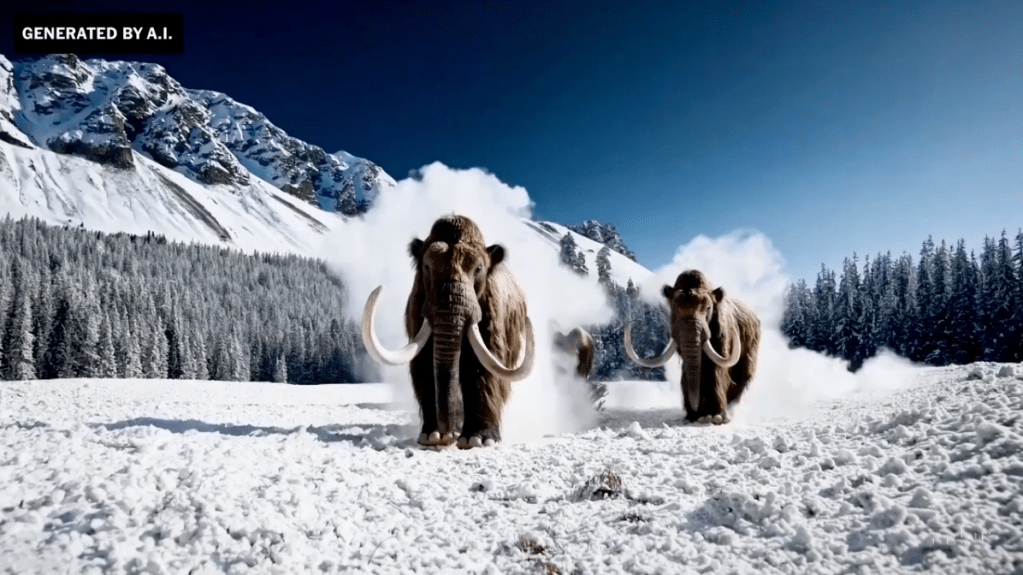Hollywood has already been toying with generative AI video tools for film and TV production, but with varying results and an existential threat to workers in visual effects and other postproduction work especially.
So the promise and peril of Sora, Sam Altman’s newly-unveiled text-to-video technology from OpenAI that claims to create highly detailed visual scenes from simple text prompts dominated a discussion on AI and worldbuilding in film and TV at the Berlin Film Festival on Saturday.
Dave Clark, a Los Angeles director and early-adopter of AI tools represented by Secret Level, argued, rather than feel threatened, creators need to embrace AI technologies for content never yet imagined or realized. “This is game changing with what we’re dealing with. You shouldn’t fear your job. You should fear the person who uses these tools,” Clark argued.
The Sora system can seemingly produce videos of complex scenes with multiple characters, an array of different types of shots and mostly accurate details of subjects in relation to their backgrounds from simple text prompts. And the OpenAI model is turning heads for coming close to generating content that maintains visual quality and consistency, while still adhering to users’ prompts.
“Experts are really looking at this (Sora) with concern or fascination or excitement about something new coming up,” for immersive storytelling and narrative, AC Coppens, founder of The Catalysts, insisted Saturday.
OpenAI’s Sora, unveiled two days ago in a beta testing phase, claims to be able to create videos up to one minute long. But Clark cautioned crisp, almost photo-realistic imagery generated by Sora had to be married with traditional storytelling and narrative techniques to find wide audiences.
“When you create that 60 second shot of an astronaut soaring through space, then what? Where does the story take us?” Clark questioned. He added Sora may be top of mind in Hollywood and the advertising industry, but there’s trepidation. “There’s a lot of excitement, but there’s also a lot of fear. What does this all really mean?” he insisted.
More immediately, Clark said AI-generated tools are ideal for creating screenplay pitch decks in just days for major studio rounds. “An Hollywood exec may never have taken that meeting, but now you might be able to offer a vision of a story that’s unique and different from your typical Hollywood fare,” he said.
Christina Caspers-Roemer, managing director of German VFX studio Trixter, said film and TV production will continue turning to human creators for content, even as AI tools like Sora proved more efficient and faster for work flows. “I’m still taking the human creators as a basis. Of course, we’re looking at faster generating ideas with all the tools available. But in the end our clients are always coming back to the real world,” she said.
In particular, Trixter clients are wary of running into legal restrictions between Canada, U.S. and Europe down the road from the use of AI tools to create VFX content. Caspers-Roemer echoed that AI and machine learning models had to be used in concert with traditional storytelling techniques.
“It’s about getting faster to a certain point where you can embrace more creativity again,” she argued.
Another panelist, Berlin-based Simon Weisse, a miniature specialist and prop maker for Wes Anderson, Steven Spielberg, Lana Wachowski, among other Hollywood directors, said he uses new AI tools and techniques to complement traditional prop making after earlier fearing he might have been out of a job.
“I’m still here. And with AI coming, it’s very interesting. A lot of people don’t want to talk about AI. But it’s just a new thing and we have to work with it,” Weisse told the panel about creating distinctive movie worlds using miniatures, as he did in coming up with the charming worlds of The Grand Budapest Hotel and Asteroid City for Anderson.
He added AI tools can be used to more quickly find photos to inspire the building of miniatures sets. “For background pictures on the miniatures, instead of searching on Google for days to find pictures, we just use ChatGPT. That’s kind of easy,” Weisse insisted.
